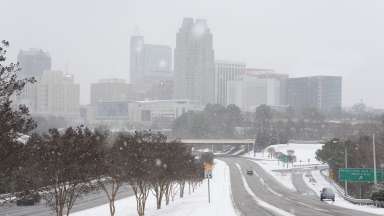Jump To:
Before extreme cold and winter weather
If you are under a Winter Storm Warning, find shelter right away!
- Stay off roads: Don’t drive unless absolutely necessary and take caution when walking in slippery conditions.
- Stay indoors and dress warmly.
- Prepare for power outages.
- Only use generators outside only and away from windows. (Generators should be at least 20 feet away from a structure).
- Listen for emergency information and alerts.
- Look for signs of hypothermia and frostbite.
- Check on neighbors.
Before extreme cold and winter weather
- Know your area’s risk for winter storms. Extreme winter weather can leave communities without utilities or other services for long periods of time.
- Prepare your home to keep out the cold with insulation, caulking, and weather stripping. Learn how to keep pipes from freezing. Install and test smoke alarms and carbon monoxide detectors with battery backups.
- Pay attention to weather reports and warnings of freezing weather and winter storms.
- Gather supplies in case you need to stay home for several days without power. Keep in mind each person’s specific needs, including medication. Do not forget the needs of pets. Have extra batteries for radios and flashlights.
- Create an emergency supply kit for your car. Include jumper cables, sand, a flashlight, warm clothes, blankets, bottled water, and non-perishable snacks. Keep the gas tank full.
- Learn the signs of, and basic treatments for, frostbite, and hypothermia.
Resources
Warmth for Wake is a seasonal energy assistance program sponsored by Wake County Human Services.
Winter Weather Tips on Ready.gov
Pointers on Staying Safe in the Extreme Cold from the National Weather Service
